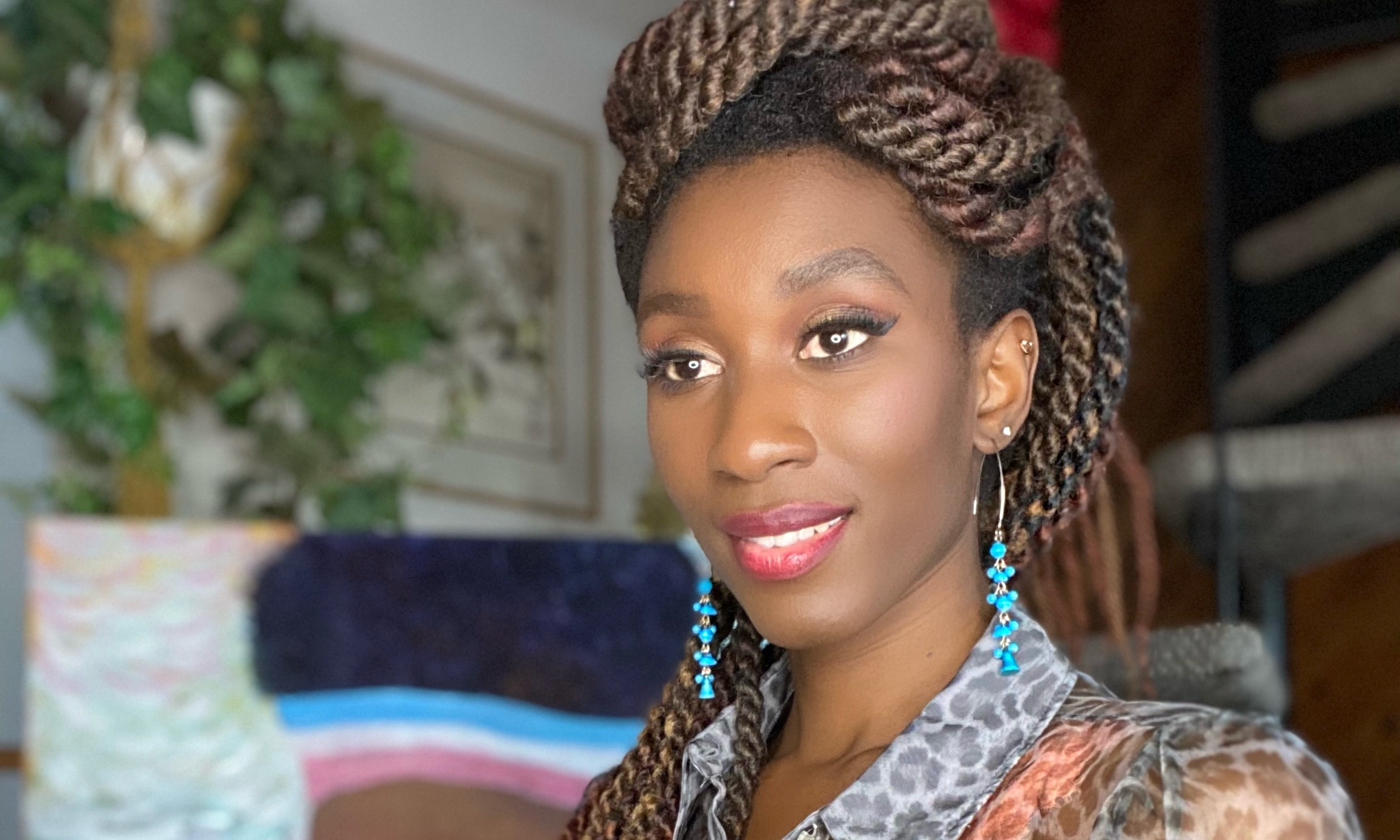In the waning days of March 2020, following the killing of Breonna Taylor earlier that month and the widespread action around the Black Lives Matter movement, Kissy Duerré joined TikTok with an idea: She wanted to find a platform where she could talk about how sexism, racism and transphobia intersect and affect her as a Black trans woman. She began, like so many others, by posting videos that were easy, fun and simple. But she wasn’t quite gaining the traction she needed to rise above the crowd. That is, until she tried a different approach: Tackling issues directly affecting Black, trans and queer people. “Once you start posting videos that actually have some value to them,” she tells Xtra from her dad’s cottage in Saskatchewan, “that’s when you realize this is something bigger than you anticipated.” The reaction to her videos made the folks at TikTok take notice, and the company selected Duerré to be one of the featured creators in its #MakeBlackHistory campaign.
Duerré lives in Saskatoon, and while it is the largest city in Saskatchewan, you might not think of it as a hotbed for trans communities in Canada. Cursory Google searches will tell you that large metropolitan cities like Montreal, Toronto or Vancouver are the country’s top picks for LGBTQ2S+ people, but Duerré first found herself and her community in support groups offered through the University of Saskatchewan. “It was a beautiful, safe space for people who just wanted to explore their gender identities, their sexualities,” she says.
Her presence on TikTok greatly expanded her community. Duerré connected with other creators and trans people on the platform who were not only like her, but who were also sharing the same messages. She was able to lean on her community for support while tackling difficult issues, like the staggering number of trans people who were killed in North American in 2020, of which trans women of colour are the most affected. Last year’s sobering statistics on fatal violence against trans people, compounded with the ongoing fight against systemic racism and police violence, is a lot for a Black trans woman to post about—especially on a platform that is often misunderstood as a factory for campy viral videos. Nonetheless, Duerré found other creators working toward the same goals:“There were times when we would message each other and say, ‘If I cover this with you, maybe cover this part,’ and whatever. It’s beautiful, that community coming together for the better good for others.”
When thinking of a platform like TikTok, one might envision bad lip syncs and bored middle-class families doing highly choreographed dances. While TikTok is still in its infancy as a social media platform (it launched in 2016), it has managed to rise to impressive heights. It was the most downloaded app of 2020—a feat largely achieved on the back of a video of Nathan Apodaca (better known as @420doggface208) that went viral across platforms. In the video, Apodaca cruises down a highway on his longboard, slamming cranberry juice straight out of the bottle to a soundtrack of Fleetwood Mac’s “Dreams.” But take a larger look at TikTok’s users—who, on average, range in age from mid-teens to late 20s—and you’ll find people using the platform’s quick videos to post and engage with social justice causes. A recent study showed that roughly two-thirds of Generation Z learn about social justice causes through the platform, with more and more young people getting their news from TikTok.
This is where Duerré found her niche. As she spent more time posting about issues that were important to her, she started to see an ever increasing growth in her audience and a change in how people were reacting to what she was creating. “I was shocked, I did not expect that,” Duerré says. “I am very humbled that my platform provides some sort of happiness, encouragement, joy to other people and encourages them to be who they are and embrace themselves. I think that is something beautiful.”
With her audience growing, Duerré realized she was not only speaking from her own experience as a Black trans woman, but also to a growing audience of LGBTQ2S+ people—some of whom were learning about themselves while engaging with her content. People have reached out, not only commenting on videos with “trans is beautiful’” affirmations, but also popping into Duerré’s DMs to ask questions. This led Duerré to begin building her content with her audience in mind. “Whenever there’s the same pattern in my DMs, if I see like, two or three or five messages, then I would actually try to come up with some sort of content that would address [the issue],” she says.
“To be a Black trans creator means that your reality can sometimes be hard for people to connect with.”
Still, to be a creator is to carry the weight of educating your audience about the reality of your life, and to be a Black trans creator means that your reality can sometimes be hard for people to connect with. “I completely understand,” Duerré says. “2020 was a very hard year for everyone. And if you are Black, if you’re transgender or part of the LGBTQ2S+ community, it was even worse for you because [you experienced] all those issues at once. The lid was taken off, and then steam just gets into the air.”
Duerré tries to stay positive. Her most recent string of videos are centered around positivity, acceptance and self-awareness. In one video, she talks about how people don’t need to medically transition to be trans; in another, she focuses on how viewers’ need to find happiness. She also makes a point to discuss the harmful stereotypes stemming from the gender binary and colonial standards of beauty and gender.
In a video from November 2020, “Mirrors” by Justin Timberlake plays in the background. Simple text on the screen reads: “At least 350 trans and gender diverse people have been murdered this year globally. A 6 percent increase since last year, 2019. 66 percent of all victims in 2020 were Black trans women.” Underneath this wall of text, the image moves, focusing first on slippered feet laying on a couch, before descending a staircase and catching her reflection in the mirror. Duerré lip syncs the lines, “I don’t want to lose you now/ I’m looking right at the other half of me.” Then she draws a heart in lipstick on the mirror and smiles.
Duerré is a true trailblazer, her content deftly moving from body positivity, queer and trans positivity and inclusion to the hard reality of LGBTQ2S+ people to her dad asking her what “WAP” means. But behind it all is her desire to use her platform to make a difference and bring difficult conversations to her audience, even when it’s hard. “It is important to have those uncomfortable conversations,” she says, “because that’s how we bring about change.”


 Why you can trust Xtra
Why you can trust Xtra


